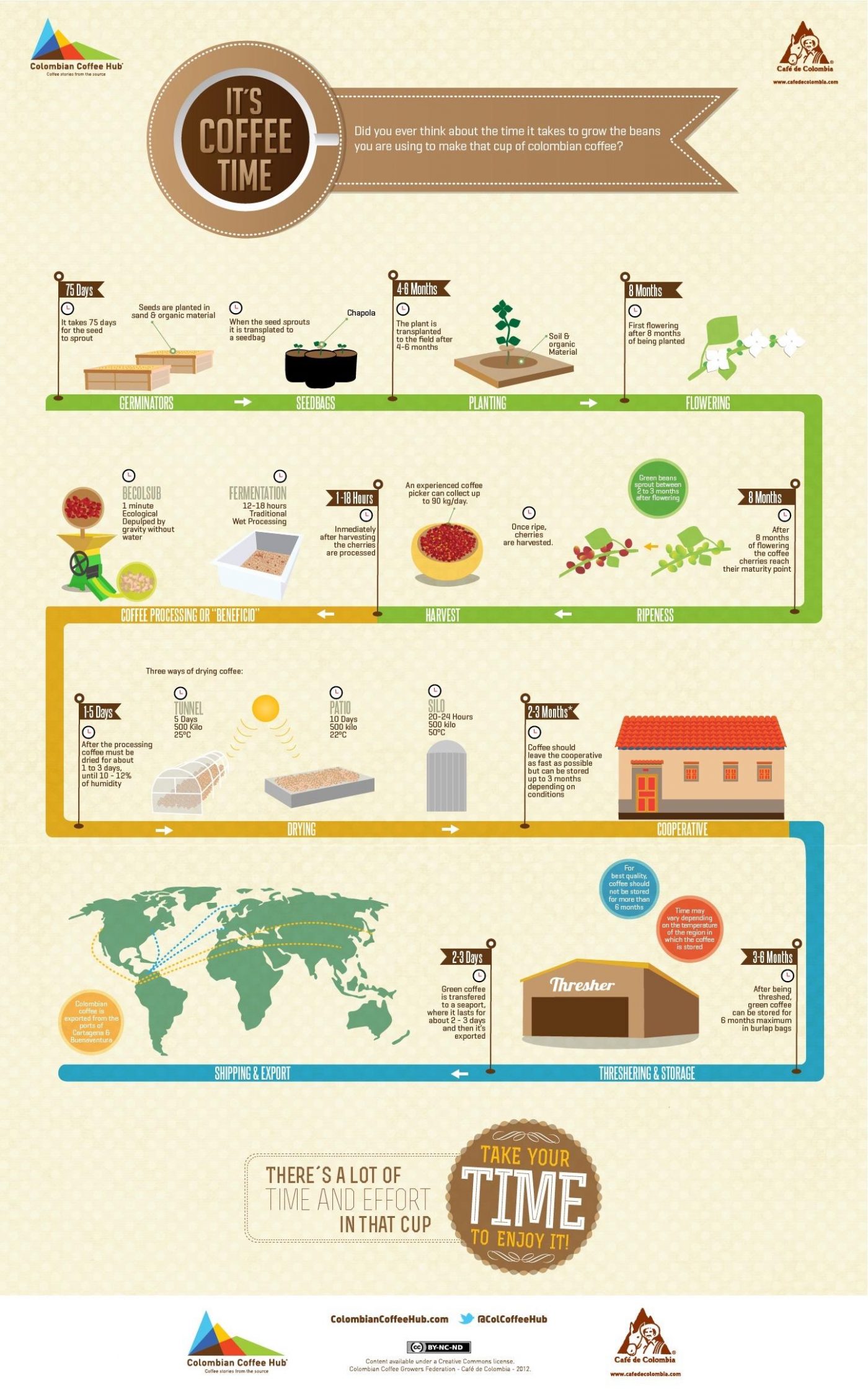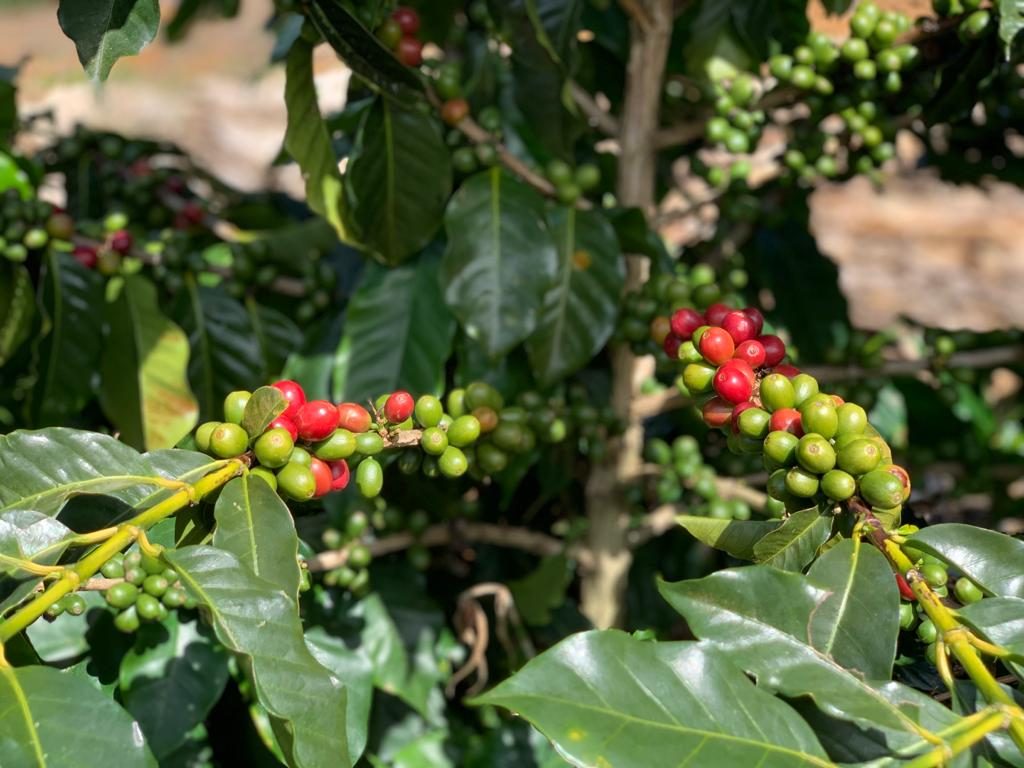We love our coffee at every time of the day. It usually takes a few seconds (espresso) or minutes (cappuccino) or even a few hours (filter / brewed coffee) to drink it. But do you know how long it takes from the coffee bean to get to your cup? Let’s find out more about the life cycle of our favorite plant!
In the following, very interesting infographic by the Colombian Coffee Hub, which we found thanks to ilcaffeespressoitaliano.com our partner blog for coffee experts and lovers, you will see the life cycle of coffee.
PLANT GROWTH (1,5 months)
The first step is of course, to plant the seeds of the coffee plant into organic and appropriate terrain. After approximately one and a half month, the seed will sprout and be transplanted into the seedbeds. After other 4 to 6 months, if the plant is growing and healthy, it will then be transplanted into the field.
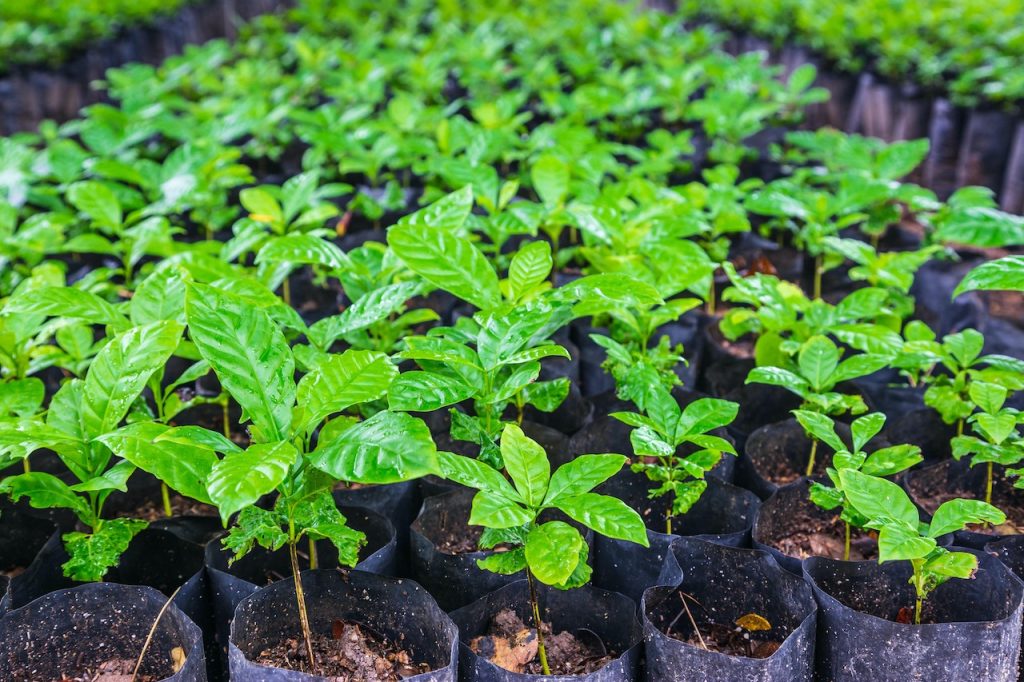
FLOWERING & COFFEE CHERRIES (16 – 20 months)
The flowering, one of the most beautiful steps in the lifetime of the coffee plant, marks the beginning of the cherry growth. It takes approximately 3 to 4 months after the flowering for the green cherries to grow and another 4 months approximately, for them to be ripe and ready to harvest.
HARVEST (approximately 90 Kg in one day)
The harvesting of coffee can take up to several weeks depending on the size of the plantation area. Also, when coffee is hand-picked, some cherries will be picked in the first phase of harvesting and for the others we might have to wait until the full ripeness, in the second or sometimes even third harvest.
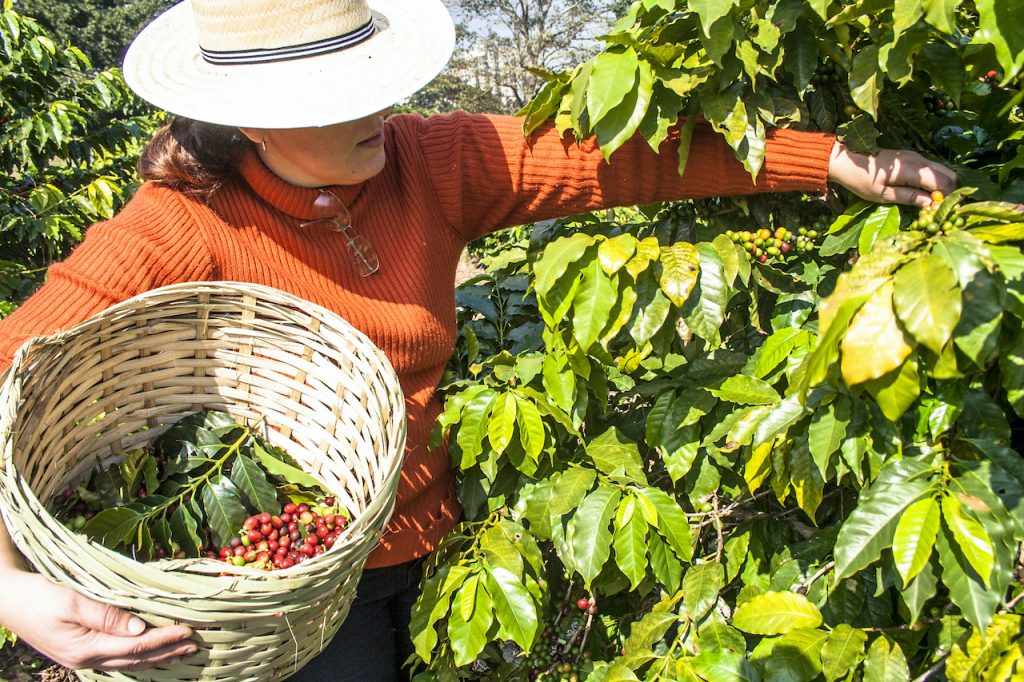
COFFEE PROCESSING (1 – 18 hours)
How the coffee will be processed really depends on the country, availabilities and choice of the farmer. One of the most traditional processing methods is the WET method in which the coffee cherries are put in water tanks for 12 to 18 hours and then de-pulped. We will go into more detail about this topic in a future article.
DRYING (1 – 10 days)
The green beans are then left to dry either on raised sun beds, patios or in the silos. The first method is the one which takes the longest but is also the most traditional, natural and preferred one when aiming for a high quality. By leaving the de-pulped beans with their parchment to dry in the sun, the flavours will penetrate to the bean.
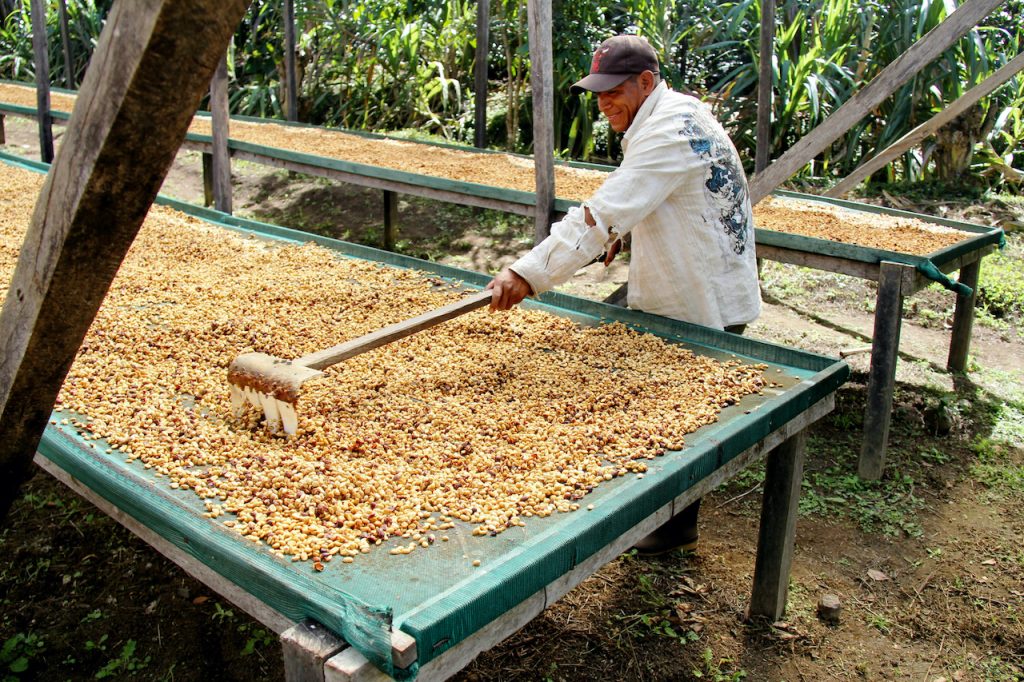
STORAGE ( 2 – 6 months)
It takes a while before the green coffee beans leave the farm’s warehouse (also called “beneficio”). The coffee is then transported to a larger warehouse before it arrives to the port where it usually stays no longer than a few days before being exported. During all this time, the green coffee beans need to be well stored in jute bags and kept in a dry and cool place.
TRANSPORT (1 – 2 months)
Depending on how the coffee is transported (by sea or by air) this time may very enormously. Anyways, big batches of coffee are usually sent via ship and therefore take around 1 to 2 months to arrive to the port. It then takes another few days for dispatching and delivery (usually by truck) to the roaster.
ROASTING (20 – 25 minutes + 2 – 3 days)
The roasting company usually stores the green beans for no longer than a few months. Our artisanal and slow roasting method at Mokaflor takes from around 20 to 25 minutes depending on the coffee variety. The roasted beans are then left to degas from 2 to 3 days in order to let the CO2 evaporate. We roast each coffee order upon request, therefore never storing the beans for longer than the necessary time before packaging.
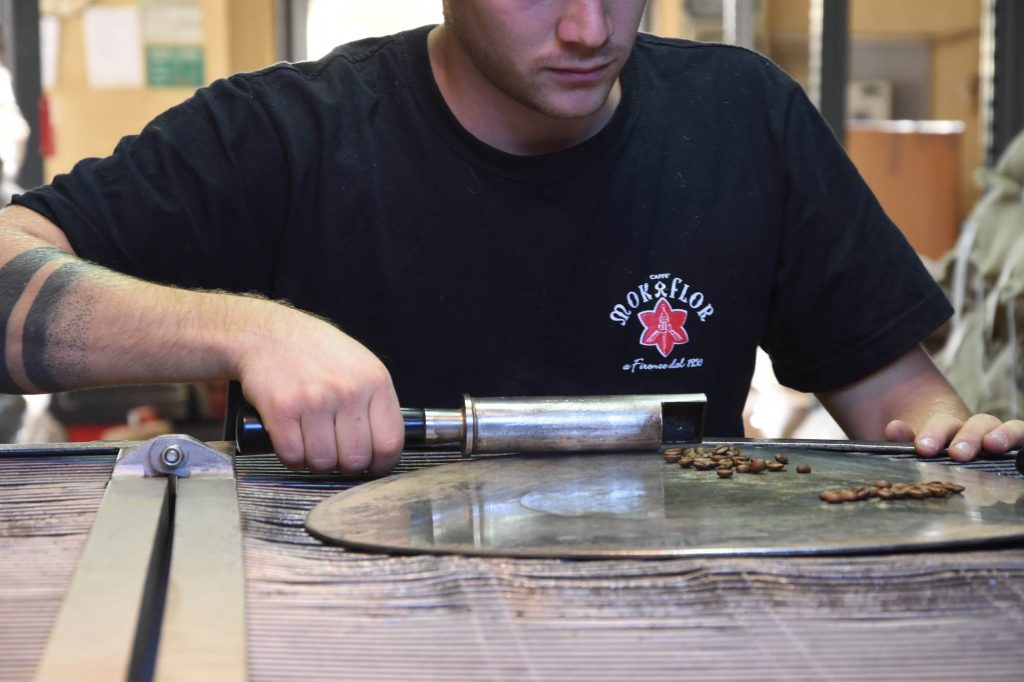
TRANSPORT TO THE COSTUMER
The transport depends were the costumer is located. Within Europe it takes approximately 2 – 3 days to be delivered. All other destinations can vary depending on the transportation method (by air = a few days; by ship = from 1 week to 1 month for the farthest destinations)
TAKE THE TIME TO ENJOY YOUR COFFEE
As you can see, coffee needs quite some time, effort and lots of care until it arrives inside your cup. Take the necessary time to enjoy and savor this gift of nature which touches and affects the lives of many different people who put their daily efforts in delivering you the best quality of coffee.
From the farmer that thoroughly grows the plant, to the workers in the processing stations, warehouses, logistic companies, to the roaster who has the very challenging and important task to best valorise each coffee’s aromatic profile and last but not least: the barista. The final piece of this very long chain who carries one of the most challenging responsibilities: turning your cup into a real experience.
Enjoy!
